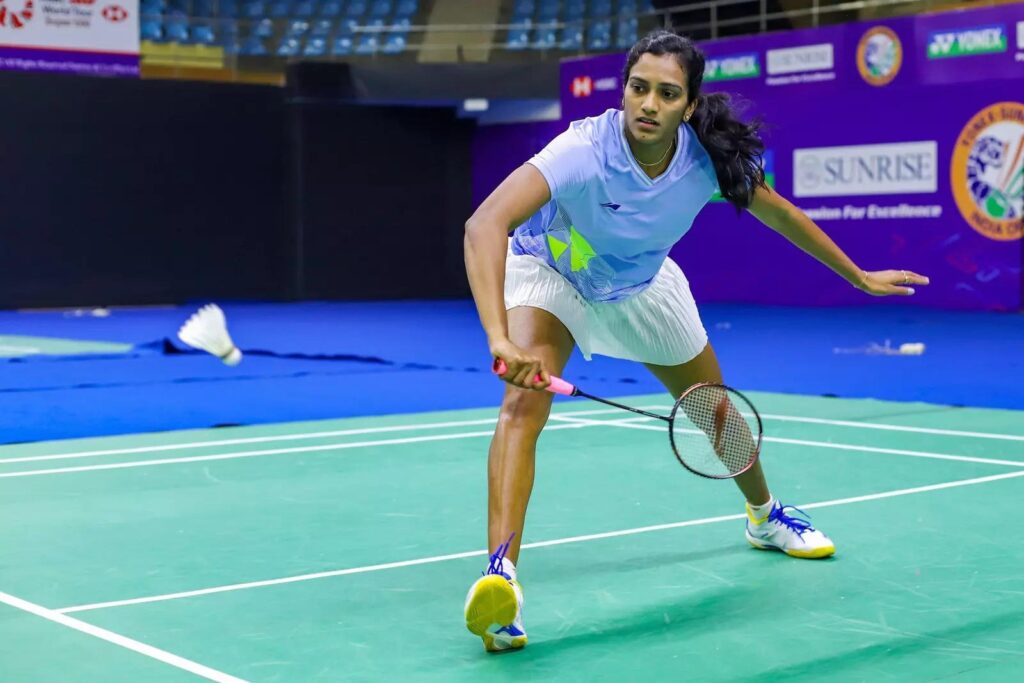
At 19-16, in the first game of the summit clash at the Rio Olympics, Carolina Marin seemed to have everything going for her against PV Sindhu. After all, the No.1 seed and the-then reigning World Champion is renowned as one of the fiercest competitors on the badminton circuit. Up until that point, the left-hander’s trademark smashes and angles had PV Sindhu on the ropes. But something was about to change.
Sindhu, who isn’t exactly known for her retrieving skills, upped her game and gave a fine exhibition of net play. Meanwhile, Marin started to make a few errors on the backhand side. Within a matter of a few minutes, the score-line read 20-19 in favour of Sindhu. Clenched fists and a few screams – Sindhu was giving Marin a taste of her own medicine. At Game Point, Sindhu showcased mind-numbing reflexes by stretching herself as much as she could on the backhand side and eventually won the point.
At that juncture, a whole nation would have visualised a gleaming Sindhu on the podium with the Gold in her hands. But it wasn’t to be as the feisty Spaniard bounced back in her typical style to win in three. Despite the heart-breaking loss, Sindhu’s journey at the 2016 Olympics was remarkable.
Sindhu, drawn in Group M, began her quest for an Olympic medal by topping that group, where she defeated Laura Sarosi and Michelle Li. Li, the Hong Kong-born Canadian player, did take Sindhu to the third game before the Indian emerged victorious. In the early rounds, one of Sindhu’s notable wins came against her future nemesis, Tai Tzu Ying.
Their current head-to-head stands at 14-4 in favour of the Taiwanese player. But 2016 was a different time, with Tai yet to reach her peak. Sindhu also used her height to great effect and took most of the half-chances that came her way to win in straight games. At 8-6, in the first game, the way Sindhu cracked the smash from the back of the court, forcing Tai to make an error, gives an inkling that the Indian took the initiative for most part of the match.
Her next opponent was the second seed and former World Champion, Wang Yihan. It was set to be a blockbuster match, as just like Sindhu, Wang could pack a punch with her lethal smashes. Although Sindhu eventually won the match, it turned out to be a close affair: 22-20, 21-19. The first game in particular had its share of powerful exchanges. None better than the rallies on display when the scoreline read 20-18 in favour of Sindhu.
The Indian used the backhand as a shield and employed some useful half smashes. Wang too matched Sindhu on that front. Ultimately, Wang won that long rally with a smash. However, that particular rally gave us an indicator that Sindhu’ fitness levels were top-notch and she was having loads of self-belief. In the second game, at one point, Wang was leading 19-18 but Sindhu hardly missed any of the half chances; the rapier-like forehand doing most of the damage. When Wang found the net at 19-20, Sindhu was down on the floor, pumping her fist and letting out a roar.
Sindhu then locked horns against N Okuhara. When these two go head-to-head, there is always a sense of anticipation that it could turn out to be a nail-biting thriller. A year later, the two ended up playing one of the greatest matches in the history of badminton at the World Championship final. The match included a mind-cracking 73-point rally. At 1.79 m, Sindhu is about 23 cms taller than Okuhara. But if Sindhu has power-packed smashes in her quiver, then Okuhara matches it with court-coverage and deft placement.
Unfortunately, the 2016 semi-final between the two didn’t touch dizzying heights as Sindhu rather comfortably defeated her opponent 21-19, 21-10. At that moment, Sindhu was just one step away from fulfilling her dream of clinching the Gold Medal. Alas! Marin was destined to triumph on that day. There was still a silver lining amid the gut-wrenching loss. The final garnered 17.2 TV viewers – the highest rated non-cricket game on any sports network in India since the inception of BARC. Hopefully, Sindhu’s journey would have inspired a few young girls to take up the sport.
During her younger days, Sindhu used to travel 56 kms to make it to Pullela Gopichand’s academy. All that pain and training materialised into a couple of medals at the Olympics and she is also a World Championship winner. As India marks 76 years of independence, Sindhu’s contribution towards Indian sport will be echoed for many generations to come.



